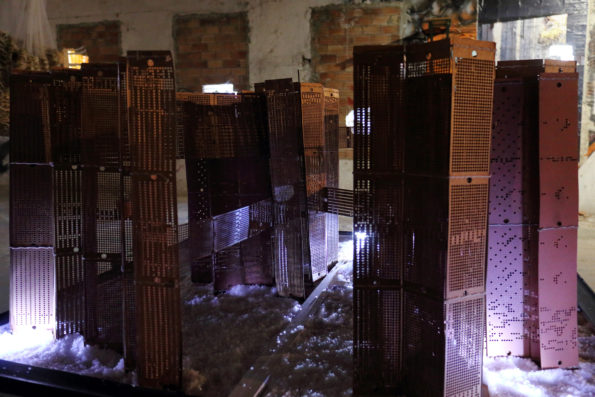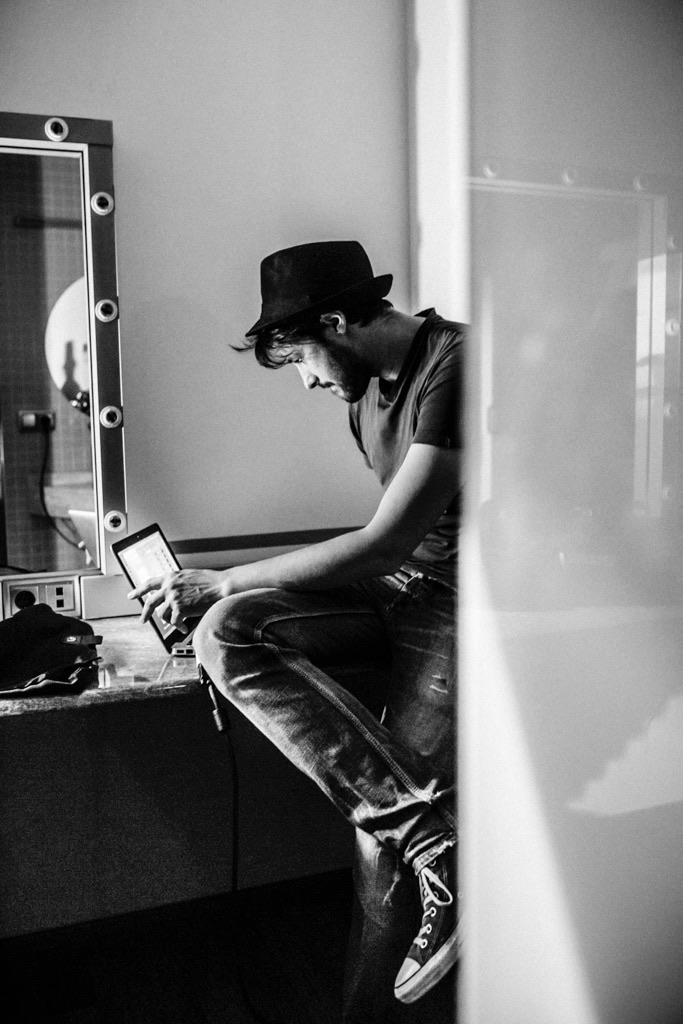Search
To search for an exact match, type the word or phrase you want in quotation marks.
A*DESK has been offering since 2002 contents about criticism and contemporary art. A*DESK has become consolidated thanks to all those who have believed in the project, all those who have followed us, debating, participating and collaborating. Many people have collaborated with A*DESK, and continue to do so. Their efforts, knowledge and belief in the project are what make it grow internationally. At A*DESK we have also generated work for over one hundred professionals in culture, from small collaborations with reviews and classes, to more prolonged and intense collaborations.
At A*DESK we believe in the need for free and universal access to culture and knowledge. We want to carry on being independent, remaining open to more ideas and opinions. If you believe in A*DESK, we need your backing to be able to continue. You can now participate in the project by supporting it. You can choose how much you want to contribute to the project.
You can decide how much you want to bring to the project.

To attempt to answer this question, we agree with Marc Augé that a ruin is a space which, due to its condition, ceases to be habitable and becomes admirable in a new poetic dimension. The effects of time from lack of use deposit a series of overlapping layers of meaning in the same space.
However, ruins not only have a poetic dimension, they also have a political one. As an empty space, uninhabitable but saturated with overlapping layers of historical meaning, the ruin is an enclave of possibilities and projections into the future. It is a space that allows us to imagine a reconstruction without the burden of use that functional spaces imply. Any projection into the future must take into account all the layers deposited in its temporary evolution: the longing and nostalgia, the uses and misuses and, above all, the irreversibility of the arrow of time of which it has been a victim.
Taking this definition as a starting point, we can transfer this vision of ruin to one of the most inhabited contemporary spaces in order to talk about the concept of “cybernetic ruin.”
At first glance, this might seem to be an allusion to the dystopian tradition as a form of representation of the possibilities of cybernetics converted into a ruin. However, within this tradition, it is worth pointing out the strangeness of the material base with which it is represented. As if it had split at some point in its history and taken another path, its technological evolution includes bundles of cables, over-sized computers, cathode ray screens and matrix needles that inscribe information onto piles of paper. Which is to say, it distances itself completely from the path taken by digitization towards the invisibility of the material base that sustains it.
In an excerpt from The Utopia of Norms, David Graeber gives an account of this transformation: at a certain point, the technological utopia that projected its dreams into the future through material transformations was cut short. Even artificial intelligence has already disappeared in a way from a shared utopian imaginary. In its place, a transindividual form of intelligence, based on the mere connection between thousands of interconnected computers and billions of shared data, has occupied our imaginary. Digital virtuality has emerged as the only possible scenario from which to imagine progress.
Obviously, for the algorithms to work, for the billion bits of data that feed into them to be stored, a material basis is required. The new cathedrals of servers are located in different parts of the globe and require a constant, costly injection of energy, as well as a series of regulations and geopolitical movements that give new meaning to borders and territories. However, this material base remains invisible today, hidden from hypnotized eyes by the virtual dimension that is the only patent reality.
What happens then to the concept of ruin? It certainly cannot be installed in the material base, on the server farms that lie invisible and impassive in the middle of the desert. It cannot be installed there due to the very nature of the digital realm: unlike buildings whose decay could lead to a gradual transformation of the content they house, in the digital world it is all or nothing. At the very moment that one of these dilapidated farms faces an incipient state of ruin, the contents it contains would all be completely destroyed.
Thus, if the material base does not accept it, if its very nature keeps it from being able to contain a ruined state, could then virtuality itself be at the mercy of decay and contain within itself the possibility of ruin?
In our collectively generated virtual states, in our shared and structural digital archives, there are movements that could lead us to believe in the eventual possibility of a state of ruin. Today, there are hundreds of outdated web pages and entire obsolete social networks that have become graveyards. However, an abandoned file isn’t necessarily a ruined file. An outdated file can be preserved intact, safeguarding its past activities and thus becoming a museum-ized element of heritage. As long as the server farms continue to host their contents, files will continue to exist with an implicit, invisible, constant maintenance that will protect them from eventual deterioration and will prevent their potential for ruin. They will be protected from the passage of dysfunctional time and, therefore, the attributions and layers that Marc Augé spoke about when defining the condition of ruin can never be deposited in them.
In the extreme case in which the material base that sustains it, the server farms, were to be ruined or even become extinct, the virtual platforms, the archives, would disappear completely, thus making the condition of ruin and everything else impossible.
To imagine the possibility of cybernetic ruin we must go a bit further and reinterpret the concept of technology, avoiding the temptation to believe that it is limited exclusively to the devices it creates. “Technology” does not refer simply to technique but to the whole of knowledge, the whole of thought that a collection of devices is capable of generating. It is also, therefore, thought understood as the nucleus of metaphors built around a set of devices to communicate a certain vision of the world.
In other words, technology is the affective disposition that generates our own relationship with a specific set of technical devices.
This concept of technology as a regulatory framework for a set of affective dispositions entails the possibility of imagining a third meaning of cybernetic ruin, a meaning that, in reality, in light of all we discussed before, would be the only possible one.
This meaning consists in thinking of human subjects, in their role as integral and fundamental parts of the ruling technological frameworks, as devices that can enter into a state of ruin. Within a specific technological paradigm, it is the subject who has the greatest possibility of becoming a ruin.
When we turn off the Internet to enter a library and intimately and attentively interact with a book, when we engage with long texts and distance ourselves from multitasking, or in more general terms, when we enter into a relationship with obsolete technologies, typical of a paradigm on its way to extinction rather than cutting-edge technological materializations, we as the active subject become a ruin. We stop being desiring objects through which the prevailing technological paradigm can go viral and develop. We are, in this sense, and in light of what Marc Augé defined as ruins, devices that create the possibility of imagining new future developments that, in turn, connect to the wealth of the sedimentation of the history contained within.
Only through the assumption of the state of ruin within us, therefore, will we be able to imagine new projections that open new futures that are connected to the remains of the past, and only thus can we avoid one of the greatest contemporary evils, typical of a hyper-technological era, which is the dilation of the continuous present as the only possible experience.
(Featured Image: La Escocesa y Mercè Ghost, by Juan Francisco Segura. Installation. Recreando ruinas 2021. La Escocesa. Photo: Marla Jacarilla)

Enric Puig Punyet holds a doctorate in philosophy, is a writer and curator. He is currently the director of Arts Santa Mònica, and was previously the director of La Escocesa, a visual arts center of the Barcelona City Council’s network of creation factories. Promoter of Enter Forum, an international meeting on the social repercussions of Internet use at the Center for Contemporary Culture in Barcelona, he is a regular contributor to various media such as El Periódico de Cataluña, La Maleta de Portbou and Le Monde Diplomatique. He is the author, among others, of the books “La cultura del ranking” (Bellaterra, 2015), “La gran adicción. Cómo sobrevivir sin internet y no aislarse del mundo” (Arpa, 2016) and “El dorado. Una historia crítica de internet” (Clave intelectual, 2017). He is also the author, with Yves Charles Zarka, of “La Tierra no nos pertenece. Repensar el territorio y la nación” (NED editions, 2017). He has just published “Los cuerpos rotos” (Clave intelectual, 2020), an essay on the digitization of experience after Covid-19.
"A desk is a dangerous place from which to watch the world" (John Le Carré)